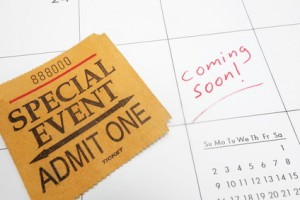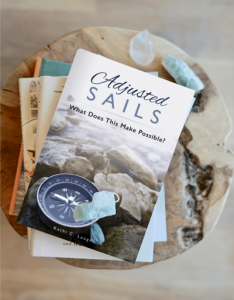 If I were to ask you if you have a “To Do List”, there is a high probability that you would say yes.
If I were to ask you if you have a “To Do List”, there is a high probability that you would say yes.
It might be on paper, on your smart phone or be a mental check list but most of us operate day to day based on what we think we need to get done.
And somewhere in there, we usually have a list!
First let’s agree that there is absolutely nothing wrong with a to-do list. In fact it’s an effective tool. All of the studies on productivity stand by the importance of being organized for strategic action.
And frankly there is satisfaction in working from a list. I’ve even been known to add things to my list after they were done just so I can cross them off! We like being able to see what we’re getting done.
It may be time, however to consider some strategies beyond just what we’re going to do. Here is a list (pun intended) of four other lists that can create a marked difference in staying on track for reaching our goals:
- To Be List – After all, it’s not about where we’re going that is the real point. For example, when talking about financial goals, Jim Rohn taught that becoming wealthy wasn’t the true reward. The true reward for anything we accomplish of significance is the person we have to become in order to get there that really matters. When we define that, we are in fact creating our “to be” list. Who do we want to be? Just by claiming those values and personal attributes changes our perspective and as a result, our day and ultimately our life is also changed.
- To Learn List – It’s important to recognize where we have a knowledge gap in any area where we will be making critical decisions or our personal performance has a crucial influence on our outcomes. And sometimes it’s just about acknowledging where we have curiosity and interest. Both are important factors in our personal development. It’s also crucial as leaders to remain active students. I recently had the privilege of hearing Jeffrey Gitomer speak and he had this to share: “If you want to stay the best at what you do, you have to stay a student of what you do.” In the curiosity department, this can and should extend beyond skills for our work. Here is where we need to step outside of our comfort zone and move into some adventure! I’ve been doing that of late and it has added a depth and dimension to my life I did not anticipate that has been immensely satisfying.
- To Know List – The building of an effective personal network, a core inner circle of influence is perhaps the strategy that has proven most invaluable for me. Going back to Jim Rohn’s teachings for a moment, he proposed that we are the average of the five people we spend the most time with in any area of our life. That has proven true time and time again. It becomes clear where our circles may need to evolve. When we are intentional with the wisdom and depth we are bringing into our lives, the results are nothing short of life-changing.
- Not To Do List – Oh yes! This one is at times the hardest! And yes, for me it addresses some “not to do behaviors” like eating sugars or drinking Diet Coke. But it goes well beyond health practices. This list forces an acknowledgement that some things on the “To Do List” need to be moved to the “To Delegate” and even “To Delete” lists. Michael E. Porter (Harvard Business Review) our modern day father of strategy had this to offer when he was asked to define strategy: “The essence of strategy is choosing what not to do.” I find that extraordinarily insightful. Being strategic requires a filter for what we are not going to do to hold the space we need for what we must do! We have to keep life clutter at bay in order to keep the path clear.
These four lists are making a marked difference in my life. Perhaps they will for you, too. Why are they important? Because with each of them we are required to think about what it is we want something to be in the end. It forces us to reach ahead in our vision to see the person we want to become and think about what it’s going to take to achieve that outcome in our lives.
Live (list) today what you want tomorrow to be. Then live (list) well!





 As I write this week’s post it is Mother’s Day. I’ve spent the day with my Mom along with my three brothers and their families. Because of today’s technology, even though my sister was in New York, we were able to have her “join” us through a video call. All five siblings were together to honor my Mom on this day set apart for that purpose.
As I write this week’s post it is Mother’s Day. I’ve spent the day with my Mom along with my three brothers and their families. Because of today’s technology, even though my sister was in New York, we were able to have her “join” us through a video call. All five siblings were together to honor my Mom on this day set apart for that purpose.





